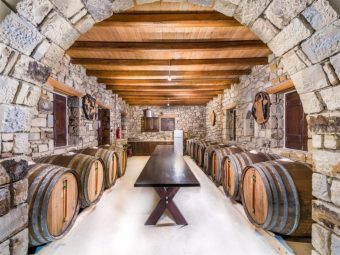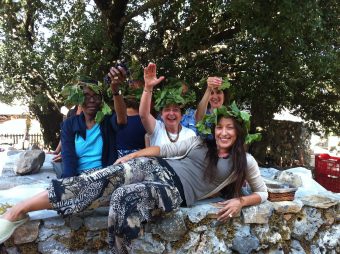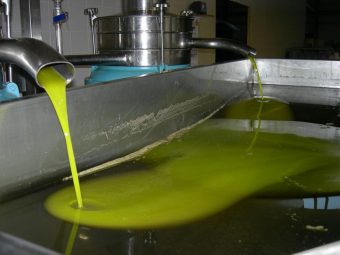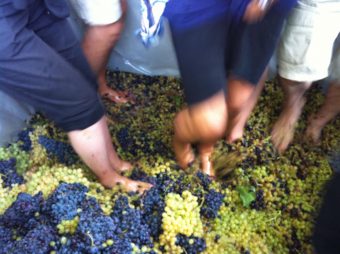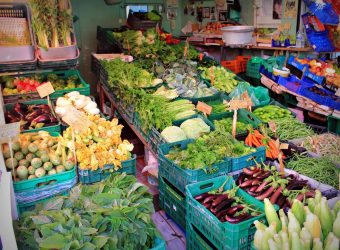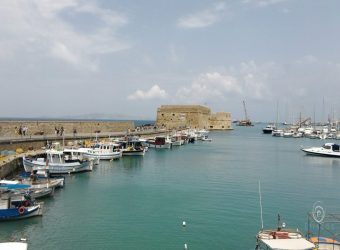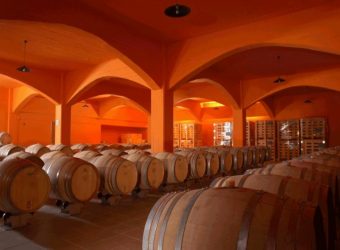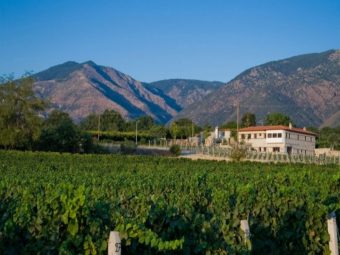Wine Journey in Crete from the Minoans to Today Cretans
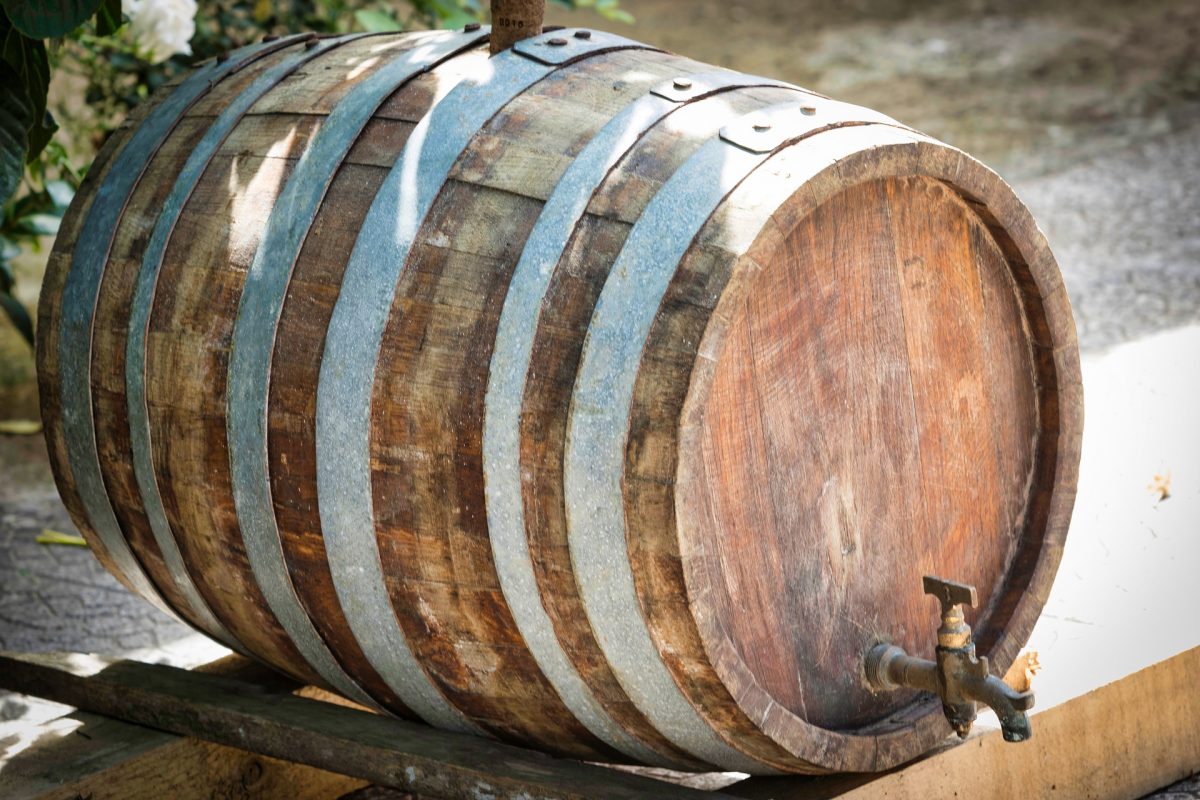
In this intoxicating article, we present the journey of wine in Crete starting from the Minoan Civilization up to the present day. Get a Glass of your favorite Wine and Enjoy it with us!
The history of wine in Crete is as old as its culture. In Minoan Crete of the mid-second millennium BC, the wine was produced and stored in the palaces. Archaeological excavations brought to light numerous life-size pithos with traces of wine in them. Minoan wine was exported worldwide together with Cretan Olive Oil. In the ritual life of the Minoans, the wine was used for their sacred libations and the sacred bull of Crete was linked with the offerings in the form of the horn-shaped libation cups called ‘rhyta’.
In the historic Era, however, Crete particularly developed viticulture with its golden period being between the 1st and the 3rd century AD. Examples of the activity and extent of wine production in Crete are the Cretan amphorae found in Lyon, Switzerland, and various Italian cities such as Pompeii and Ostia. The sweet wine of Crete and later the so-called «athiri» from the homonymous variety were among the famous wines also during the Byzantine years. During the Venetian rule, with the strengthening of viticulture by the Venetians, Cretan wine had taken off. It was the main export product of the island and its demand was so high that it was exported to other European countries besides Venice.
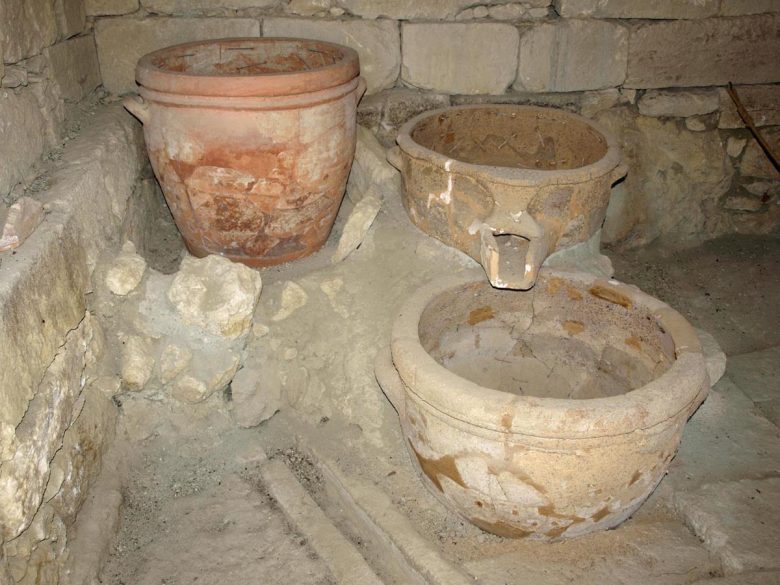
Wine Production in Minoan Crete
The cultivation of vines in Crete is lost in the depths of its history. The first people who came to Crete, in the Neolithic period (6,000 — 3,000 BC), brought probably with them the grapevine.
Mobile wine presses (clay or stone), such as the press of Myrtos, belong to the pre-Minoan era. This is confirmed by the technique of viticulture and the refined vinification presented in Crete from the 3rd millennium BC. Furthermore, from the culture of vineyard and wine, which appeared and developed for the first time in the history of Mankind in Crete, many centuries before it appeared in Egypt. Moreover, from a torrent of Minoan finds of the mid-Minoan period such as Tylissos. This fact becomes even more probable from the 41 Minoan presses excavated by archaeologists dig in various areas of Crete such as Knossos, Phaistos, Vathipetro, Malia, Gournia, Palekastro, Zakros, etc. Additionally, from the various and sacred wine vessels of the Minoan society and finally, from the hundreds of drawings with the ideogram of wine.
All the above convincing historical facts show that Minoan viticulture had such a flawless organization of wine production and distribution, which even the most modern Europeans would envy. In some drawings of the Minoan sanctuaries, it is possible to read several Minoan varieties of wine, such as the Holy Trinity (Messara) which is written in the syllabic Linear B script.
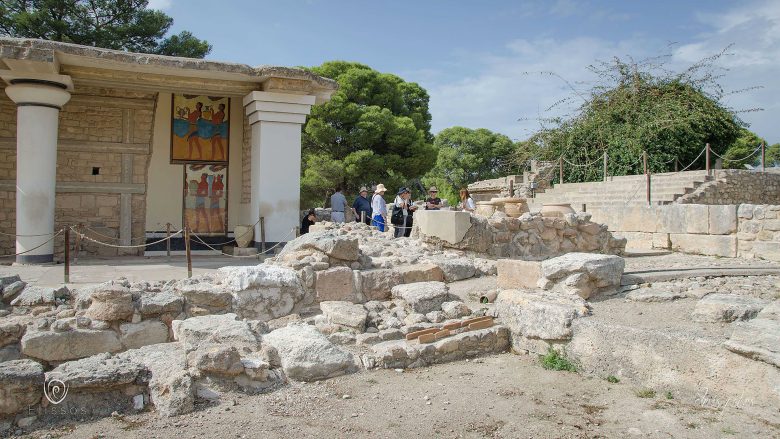
Ancient Mentions on Cretan Wine
The close and special relationship of wine in Crete is also mentioned by Homer in several verses of the Odyssey and the Iliad. The viticultural tradition of the Minoan period was managed to be preserved by the ancient Cretans, producing the famous Cretan wines of antiquity (Classical Greek and Hellenistic period 500-67 BC.) which were admired by several writers and poets. Some of these wines were: The renowned «Thrinia» of Isichios, the «Tetrinia» of Pausanias, the «Glyki, kri oinon» of Ailianos, the «Thiraion oinon».
Additionally, the old Pramniotian wine which according to Aelianos came out in Crete and Thrace. Pliny wrote the following: “After the raisin wine of Crete, Passum good wines are also considered those of Cilicia, Africa, Italy, and other neighboring provinces”. This is probably the reason why the Romans, after the conquest of Crete, turned the whole region of Knossos and many other areas into a Roman latifundium to produce the wonderful «Passum» wine, which their nobles drank. They forcibly implemented monoculture, as a result of which the other traditional crops from these areas were endangered. In addition to these famous wines, the farmers of Crete, with great effort improved and preserved other local vine varieties and so with the natural selection, they further improved the quality of their wines in the following years.
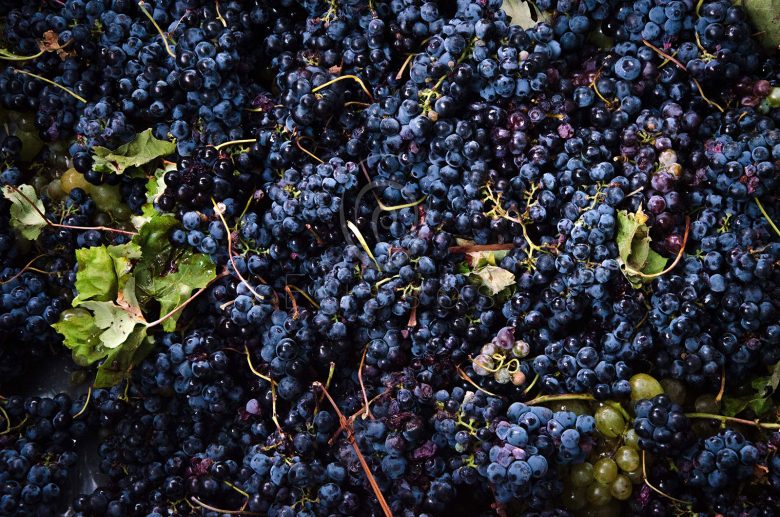
Wine in Crete during the Byzantine Era
During the Byzantine period, the farmers of Crete created a new wine called «Athiri» that was praised by several poets. When the Arabs conquered Crete in the early 9th century, they uprooted its vineyards and culture for 150 years. However, the farmers of Crete resisted and they replanted their vines. As a result, in the 2nd Byzantine period, they created a famous «Moschato» and the much-discussed and wonderful wine «Malvasia«. These wines had excited Europe since the 14th-17th century and were praised by its best poets.
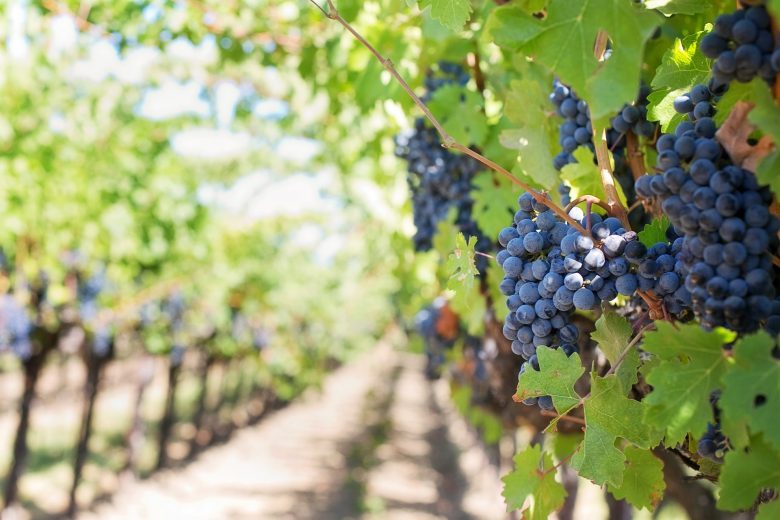
Wine in Crete during the 19th Century
During the Ottoman Rule of Crete from the mid 17th to the 19th century, the Ottoman Turks annihilated the Cretans along with their vineyards. As a result, after the revolution of 1821 and the Cretan Liberation of 1898, the island had to import around 50,000 barrels of wine and 25,000 barrels of raki per year, for a decade. Again, the farmers of Crete quickly replanted their vines which are preserved to this day.
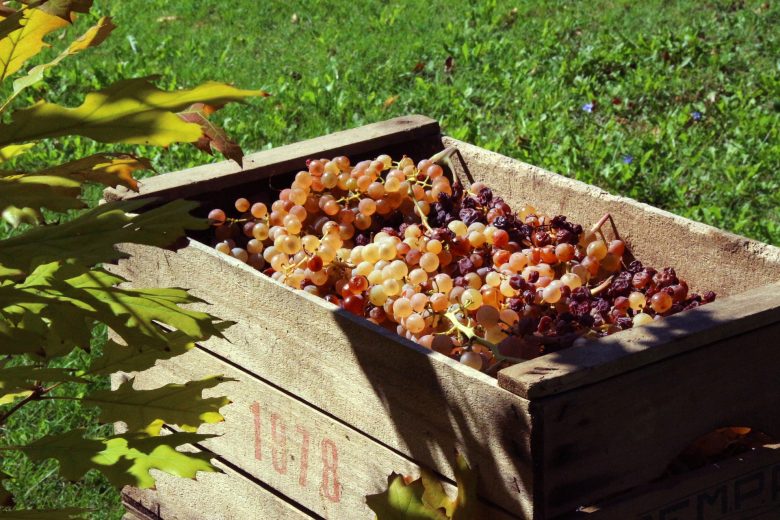
Grape Harvest in Crete Today
Today, the harvest season in Crete varies from region to region depending on the variety and the altitude. In most of Crete, it usually starts in August, with September being the peak month. The harvest and the pressing of the grapes have always been of the most important agricultural works and it became an occasion for celebration and a prolonged festival that was always accompanied by the corresponding customs. The traditional process of harvesting is followed even today in places where the production is small scale and the traditions are preserved.
The harvest in the past relied heavily on the locals helping each other. Thus, friends and relatives gathered from very early in the morning to harvest and carry grapes. The harvested grapes were collected in special baskets. This was followed by the production of wine that included the pressing of grapes in specially constructed areas, the so-called «presses», whose history is inextricably linked to Crete. One by one, the participants entered the «press» by stepping on the grapes, to make the ecchymosis. The grape must was then transported and usually stored in large wooden barrels, where it was «boiled» (fermented). The first tasting of the wine took place on the day of Saint Dimitrios, on October 26th.
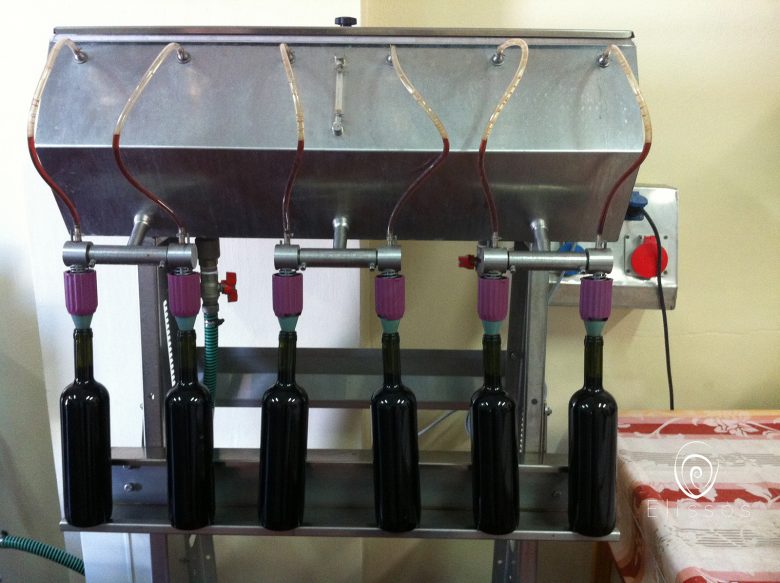
A few Varieties of Cretan Wines
The grapevines of Crete come in 3rd place on the wine map of Greece among the 9 wine-growing regions. The areas of Dafnes, Peza, Archanes, and Sitia have given their name to respective PDO wines and cover 12,8% of the Cretan land. The viticulture and production of wine are immense in other areas of Crete such as Chania, Rethymno, and Kissamos.
In addition to the international varieties such as the red Cabernet Sauvignon, Syrah, Merlot, Sangiovese, and the White Chardonnay and Sauvignon Blanc, the island also cultivates important local varieties, some of which are the following:
Vidiano
The white variety gives high-quality wines, of medium acidity, with particularly apricot aromas. Finding wines from the Vidiano variety is still difficult, but in a few years, this charismatic grape will certainly become the white «diva» of Crete. And this is because it has a unique apricot aroma, great taste richness, and a strong, creamy taste.
Daphni
The white variety Daphni is one of the rare and most ancient Cretan varieties that managed to survive thanks to the persistence of individual producers. It gives wines of moderate acidity and characteristic of the variety is the aroma reminiscent of laurel.
Thrapsathiri
A white variety that is considered a clone of the Athiri but differs viticulturally. Gives wines of high quality, medium acidity, and slightly aromatic. All over Crete they cultivate it giving wines a delicious richness and balance, while its intense, heavy botanical aroma gives a special personality to the white wines ‘PDO Sitia’. Unfortunately, its tendency towards oxidation had put it on the sidelines in recent decades. However, the state-of-the-art equipment of quality wineries now allows every wine lover to enjoy the graces of this variety.
Kotsifali
An excellent red variety that has a soft, sweet taste loaded with plum aromas. The fleshy Kotsifali -which can also be characterized as the Merlot of Crete, finds its way more and more often in single-variety bottling. Its wines are of high quality, very aromatic, low in acidity but with an unstable color. For this reason, they combine it with the variety Mandilaria (PDO Archanes and Peza).
Liatiko
The characteristic of the variety is the early ripening that takes place at the end of July, hence its name. Gives red dry wines, of medium acidity but with a weak color. Liatiko compensates with delicacy, soft character, and unique aromas of dried fruits, herbs, and flowers. This variety produces the dry and sweet PDO wines of Sitia and Dafnes.
Malvasia
This is the famous Cretan wine from the Byzantine years until the beginning of the 19th century. It is a white variety that gives wines a pleasant taste, intense characteristic floral aroma, and notes of musk. Known for its finesse, Malvasia returned to the forefront a few years ago. Crete acquired a powerful weapon in the field of aromatic dry and sweet wines.
Mandilari
Mandilari is the king of the indigenous varieties of the island. This red grape gives wines of moderate acidity, medium to low alcohol content but very rich in color. For this reason, they often mix it with varieties such as Kotsifali. From this blend come the PDO wines Peza and Archanes — and Syrah.
Moschato Spina
It is a clone variant of the White Moschato. It took its name from the community of Spina in the province of Selino, Chania. The variety has an explosive aroma and a remarkable dryness and sweetness to it.
Plyto
White variety, the cultivation of which has reappeared in recent years, giving single-variety wines but also participating in blends. The reason is that Plyto has a rare — for the levels of hot Crete — refreshing acidity and lemony presence. Kythira island also cultivates it and they name it Ploto.

Elissos Travelling Philosophy – Wine Experiences
The Wine Experience
Our Wine Experience will help you familiarize yourself with the fertile wine regions of Central Crete. You will not only explore the unique landscapes of the Heraklion region, but you will also visit local wineries. There, you will have the chance to taste a variety of delicious local wines. With wine tastings, a meze style lunch is always a must, therefore you will enjoy local specialties that will go perfectly with your wine!
For more details and to book this tour, click here!
Olive Oil and Wine, Now and Then
A tour designed to captivate your senses with all the olive oil and wine aromas and tastes! Visit a traditional local olive oil factory where the experts will explain the different stages of olive oil production. Leave the olive oil factory with a bottle of extra virgin olive oil in your hands. Enjoy a stop at the prehistoric area of Vathipetro, the oldest European Winery! There, learn about the traditional methods of Wine Making before you make your way to a local winery to participate in grape-stomping. After a full day of tastings, it is time for lunch! We selected the most peaceful scenery for you to enjoy a three-course traditional meal, at an Agro Farm!
For more details and to book this tour, click here!
Heraklion Historic and Culinary Experience
The beautiful capital of the Heraklion region, Heraklion Town, is one of the busiest city centers in Crete. After you stroll around the most famous landmarks of the city, your expert guide will take you to local places to begin your traditional pastry tastings. After you satisfy your sweet tooth, proceed to the open-air market where the tastings will continue! Make sure to leave room for the final tastings of the tour, wine, and olive oil where you will learn how to pair them with Cretan delicacies.
For more details and to book this tour, click here!
The Great Labyrinth Tour
A tour dedicated to the Minoan Earth Goddess! Researching the Divine Feminine is a true inspiration for women and men of all corners of the earth. First, visit the mythical Labyrinth of Homer, following a spiritual and mythological approach. Then, experience a full session on the Minoan Ritual Dance in nature. Enjoy a special local meal at a traditional Cretan restaurant in the mountains. In addition, find yourself in a wine region! There, you can taste local wines and get to bottle and seal your own wine in a bottle. Perhaps you can seal an extra one to gift to a loved one back home!
For more details and to book this tour, click here!




